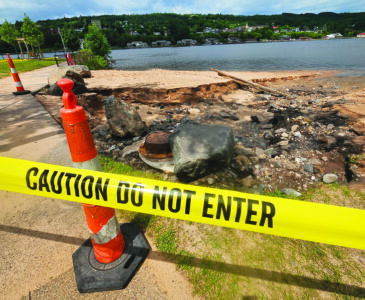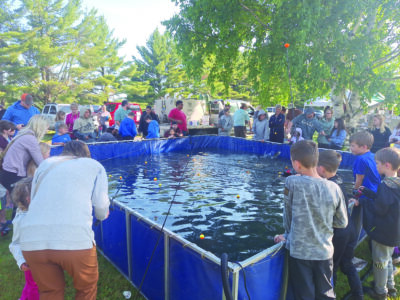Black Lives Matter: No hate group, but a fighting movement
The oppression of African Americans by various police departments and courts around the nation is well documented, and in recent years, Black Lives Matter (BLM) has been a voice trying to bring equality to the American justice system. The killing of George Floyd in Minneapolis this week, is but one example of what BLM is trying to change.
The Black Lives Matter movement began in 2012 in Florida with the murder of Trayvon Martin. Martin was an unarmed Black youth who was murdered by a neighborhood watchman, George Zimmerman. Zimmerman had called the police and said he suspected Martin had robbed a nearby store. Despite police telling Zimmerman to let the police handle it, Zimmerman pursued Martin. Zimmerman exited his car and confronted Martin, and after an altercation, shot Martin dead. Martin’s body was tagged as a “John Doe,” and was not identified until his father filed a missing person’s report. In the trial for Martin’s murder, the case ended with a “not guilty” verdict. There was no case for forty-five days until enough public pressure was applied to force a case.
In 2014, Eric Garner, a Black man, was killed in a fashion very similar to the killing of Floyd George. Daniel Paleo, a New York officer, applied a chokehold on Garner on a sidewalk until Garner was dead. Garner’s alleged crime was selling loose cigarettes. Multiple witnesses and phone recordings clearly caught Garner saying 11 times he could not breathe. He was held down by several officers as Paleo choked him. Black Lives Matter gained national attention as a movement in 2014 in Ferguson, Missouri, with the killing of Michael Brown.
Brown was shot and killed by Officer Darren Wilson on Aug. 5, 2014. Wilson argued that Brown was lunging to attack him, while witnesses reported Brown was raising his arms in surrender.
In “Why Are All the Black Kids Sitting Together in the Cafeteria,” a comprehensive study of racial issues in America, Dr. Beverly Daniel Tatum states, “What is indisputable is the inhumane treatment of Michael Brown’s body, left to die uncovered in the street where he was slain for four hours.”
The day after the shooting, a peaceful protest calling for Officer Wilson to have consequences for his actions, turned into a heated debate with cops who tried to disperse them, despite their 1st Amendment right to protest. At the beginning of the Ferguson riot, Dr. Tatum pointed out that, “Washington Post writer Wesley Lowery notes that it was not the death of another unarmed Black man that drew national media; rather, it was the destruction of property that brought national media, including him, to Ferguson.”
The “looting” was not about looting, it was about getting attention, forcing the nation to listen to them by giving the media what it wanted to see. During the riot in Ferguson, Black Lives Matter gave itself national legs through social media by the protestors sharing videos and inviting other outraged citizens to Ferguson for modern “Freedom Rides,” bringing thousands to join in the demonstrations.
The Ferguson police responded with tear gas, tanks, and rubber bullets. The demonstrations in Ferguson brought to light the long history of police oppression over the Black citizens in Ferguson, using Ferguson Blacks to fill quotas, showing a disproportionate number of arrests, traffic stops, citations and tickets, excessive fees, and police brutality, all reported by the Department of Justice through the 2015 Investigation of the Ferguson Police Department.
For BLM, social media is instrumental in raising awareness and organizing demonstrations, as well as raising funds to post bail for arrested members/activists. BLM’s online presence and organization led to strong offline presence, and caught the attention of professional athletes, such as Colin Kaepernick, who began kneeling during the anthem in protest of police brutality and mistreatment of African Americans. Kaepernick’s quiet protests in no way reflect his views on the U.S. military, only the shortcoming of the justice system.
BLM has been critiqued by many for having “extreme and unagreeable methods” in their protests and demonstrations for equal rights. Some Americans have suggested BLM be labeled as a hate group like the Ku Klux Klan or the white supremacist group White Lives Matter. Every year, the Southern Poverty Law Center (SPLC) is tasked with keeping up the registry of hate groups in the U.S. Former president of the SPLC, Richard Cohen, explains that BLM is not a hate group. Many calls for BLM to be labeled a hate group sounded after the murder of eight police officers at the hands of alleged BLM members. Cohen explains, “In our view, these critics fundamentally misunderstand the nature of hate groups and the BLM movement. Generally speaking, hate groups are, by our definition, those that vilify entire groups of people based on immutable characteristics such as race or ethnicity. Federal law takes a similar approach.” Statistical outlying events and numbers are not sufficient numbers to place BLM on the hate group registry. BLM does not condone murder and extreme violence.
In Black Lives Matters’s short existence, through social media and active, in-person protests, BLM has brought worldwide attention to African American social justice disparities and police brutality of minorities in volumes that would be unimaginable before the age of social media. Some of the movement’s methods are contested, but silent complacency doesn’t bring social justice. Black Lives Matter is not just an organization, but a “Black Lives Matter” has become a chant and rallying cry for millions, and not exclusively by members.





